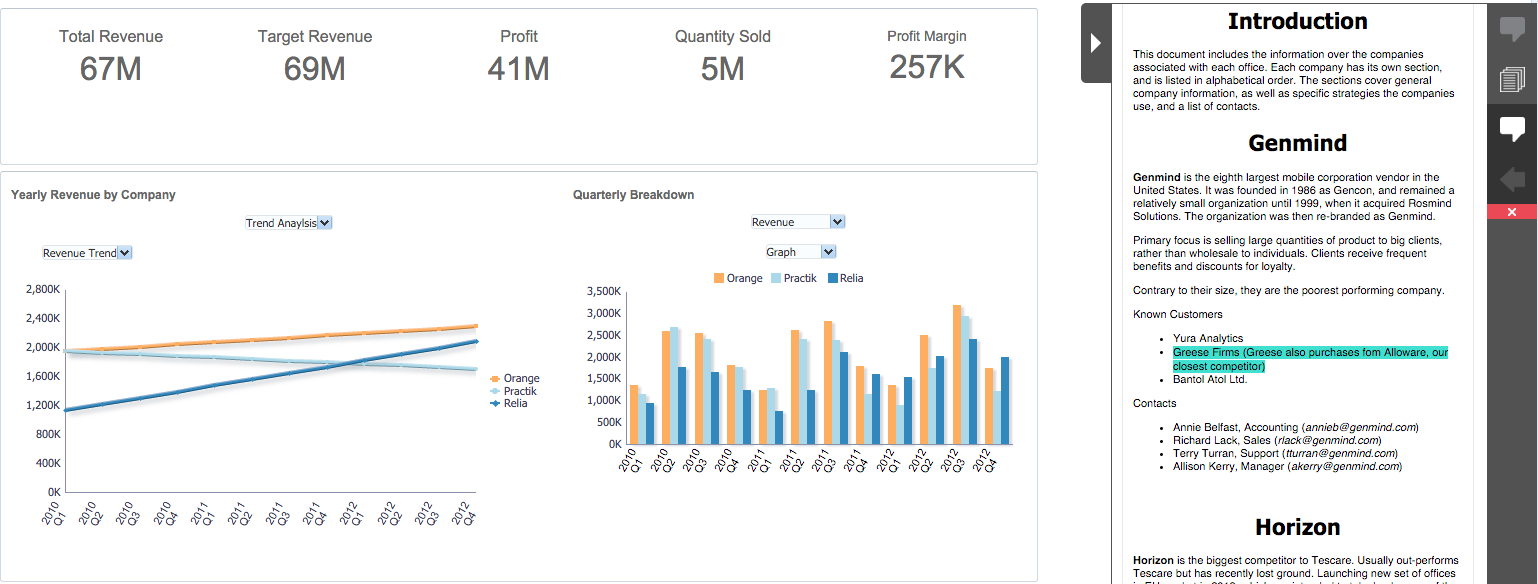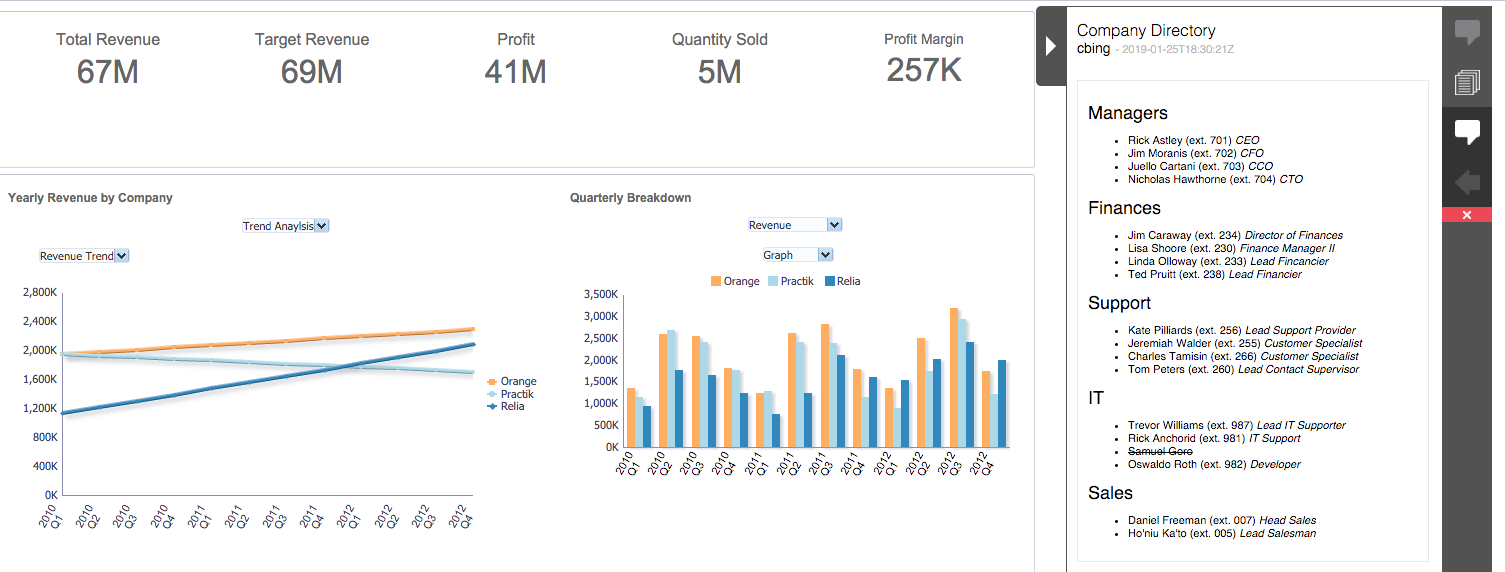The Importance of BI Documentation

Why Is BI Documentation Important?
Business intelligence systems come with a lot of extra information. Even beautifully constructed analyses have piles of background information and histories. Administrators might often have memos and updates that they’d like share with analysts. Sales figures might have anomalies that need further explanation. But OBIEE does not currently have any options for BI Documentation inside the dashboard.
Let’s say a BI user for a cell phone distribution company is viewing a report comparing the yearly sales figures for several different cell phones. If the analyst notices that one specific cell phone is outperforming the others, but doesn’t know what makes that specific model unique, then they have to go searching for that information.
 But what if the individual phone model specifications and advertising and marketing histories were already included as reports inside the dashboard? What if the analyst, with only a couple of clicks, discovered that the reason one cell phone was outperforming the others was due to its next-gen screen, camera, and chip upgrades, which proved popular with consumers? Or what if the analyst discovered that the popular phone, while containing outdated peripherals, was selling so well because a Q3 advertising push for that model only? All of this information might not be contained in the dashboard’s visuals, but greatly affects the analysts’ understanding of the reports.
But what if the individual phone model specifications and advertising and marketing histories were already included as reports inside the dashboard? What if the analyst, with only a couple of clicks, discovered that the reason one cell phone was outperforming the others was due to its next-gen screen, camera, and chip upgrades, which proved popular with consumers? Or what if the analyst discovered that the popular phone, while containing outdated peripherals, was selling so well because a Q3 advertising push for that model only? All of this information might not be contained in the dashboard’s visuals, but greatly affects the analysts’ understanding of the reports.
Current Options for OBIEE Documentation
Some information can be displayed as visuals, but many times this isn’t a practical solution. Besides making dashboards too cluttered, memos, product descriptions, company directories, etc., are not practical as charts and graphs. As of right now, important documentation can be stored in a wide range of places outside of the BI dashboard, but the operating reality at most organizations means that important information is spread across several locations and not always accessible to the people who need it.
 Workarounds are inefficient, cost time, cause BI users to leave the BI environment (potentially reducing usage), and increase frustration. If an analyst has to email several different people to locate the information she wants, that complicates her workflow and produces extraneous communications (who likes answering emails?). Before now, there wasn't an easy solution to these problems.
Workarounds are inefficient, cost time, cause BI users to leave the BI environment (potentially reducing usage), and increase frustration. If an analyst has to email several different people to locate the information she wants, that complicates her workflow and produces extraneous communications (who likes answering emails?). Before now, there wasn't an easy solution to these problems.
ChitChat's BI Documentation Features
With ChitChat, it’s now possible to store critical documentation where it belongs—at the source of the conversation. Keep phone directories, memos from administrators (or requests from analysts to administrators), product descriptions, analytical histories—really, the possibilities are endless—inside the dashboard where they are accessible to the people who need them. Shorten workflows and make life easier for your BI users.
ChitChat’s easy-to-use functionality allows BI users to copy and paste or write (ChitChat has a built-in WYSIWYG text editor) important information inside the BI dashboard, creating a quicker path to insightful and actionable analytics. And isn't that the goal in the end?
To learn more about ChitChat's many commentary features, or to request a demo, click here.
